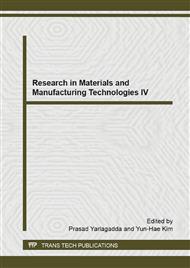p.392
p.396
p.400
p.405
p.410
p.417
p.421
p.427
p.431
Uniaxial Compression Creep Prediction of Asphalt Mixture Using the Eshelby Equivalent Inclusion Method
Abstract:
Asphalt mixture was simply treated as a two-phase composite, in which coarse aggregates are embedded into asphalt mastic matrix. According to the elastic-viscoelastic correspondence principle, an elastic micromechanical method is extended for predicting viscoelastic properties of asphalt mixture, which is simply treated as elastic coarse aggregate inclusions periodically and isotropically embedded into viscoelastic asphalt mastic matrix. The Burgers model is adopted for characterizing the matrix mechanical behavior, so that the homogenized relaxation modulus of asphalt mixture in compression creep is derived. After a series of uniaxial compression creep tests are performed on asphalt mastic in different stress conditions in order to determine the matrix constitutive parameters, the presented framework is validated by comparison with the experiment, and then some predictions to uniaxial compression creep behavior of asphalt mixture in different stress conditions are given.
Info:
Periodical:
Pages:
410-413
Citation:
Online since:
December 2014
Authors:
Price:
Сopyright:
© 2015 Trans Tech Publications Ltd. All Rights Reserved
Share:
Citation:


